#Ember.js
Explore tagged Tumblr posts
Link

A collection of ember.js developer tutorials, guides, courses, tips and how-tos. Sourced under a public domain license. This list will be updated regularly. Email over the URL, if you wish to be included.
https://www.apaintingfortheartist.com/2023/09/02/a-collection-of-ember-js-developer-tutorials-guides-courses-tips-and-how-tos/
#ember js#ember.js#ember developer#ember.js tutorials#ember.js guides#ember.js courses#ember.js how tos
0 notes
Text

Ember.js Development Company
Partner with a top Ember.js development company for high-performance, scalable web and app solutions. Unlock innovation and efficiency with expert Ember.js developers. Our Ember JS developers are skilled and experienced in developing customized web applications that provide great user experiences while addressing business needs.
#Ember.js Development Company#Ember.js Development services#ember framework#emberjs development#Primathon
1 note
·
View note
Text
Ember.JS Development Company in New York
LDS Engineers is a leading Ember.js development company in New York, recognized for delivering high-quality and result-driven development services to clients worldwide. With a team of highly skilled developers, we specialize in creating dynamic and scalable web applications tailored to your business needs. Our offshore Ember.js development services empower businesses to access world-class IT…

View On WordPress
#art#books#business#ember.js application development#ember.js development#Ember.JS Development Company#ember.js development in us.#ember.js development services#technology#travel
0 notes
Text
Ember.JS Development Company in New York
LDS Engineers is a leading Ember.js development company in New York, recognized for delivering high-quality and result-driven development services to clients worldwide. With a team of highly skilled developers, we specialize in creating dynamic and scalable web applications tailored to your business needs.

Our offshore Ember.js development services empower businesses to access world-class IT expertise while achieving their strategic goals. We prioritize trust, transparency, and long-term relationships with our clients, ensuring that your project is delivered on time and within budget.
At LDS Engineers, we understand the importance of data security and confidentiality. That’s why we implement robust security measures to protect your sensitive information at all stages of development. Our team works diligently to ensure your intellectual property remains safe, giving you peace of mind throughout the process.
We pride ourselves on offering cost-effective solutions without compromising quality. By leveraging Ember.js, we develop fast, reliable, and user-friendly applications that meet your unique requirements. From startups to enterprises, our solutions cater to businesses of all sizes and industries.
Our commitment to excellence goes beyond delivering superior products. We provide round-the-clock support through our 24/7 help desk, ensuring any issues or queries are promptly addressed. Our goal is to ensure seamless communication and exceptional customer service at every step of the journey.
Choose LDS Engineers for your Ember.js development needs and experience the difference of working with a trusted and experienced partner. Let us help you transform your vision into a robust digital solution that drives results. Contact us today to discuss your project and learn how we can help your business thrive!
ember.js application development, ember.js development, ember.js development services, ember.js development company, ember.js development in us.
#ember.js application development#ember.js development#ember.js development services#ember.js development company#ember.js development in us
0 notes
Text
Top 10 Front-End Frameworks and Libraries for 2024
As the web development landscape continues to evolve, staying updated with the latest front-end frameworks and libraries is crucial for any developer. Whether you're a seasoned pro or just starting out, knowing which tools to use can significantly impact your productivity and the quality of your projects. In this post, we’ll explore the top 10 front-end frameworks and libraries that are set to dominate in 2024.
1. React
React remains one of the most popular front-end libraries, known for its simplicity and flexibility.
Key Features of React
Component-Based Architecture: Reusable components make development efficient and manageable.
Virtual DOM: Enhances performance by minimizing direct DOM manipulation.
Strong Community Support: A vast ecosystem of tools, libraries, and tutorials.
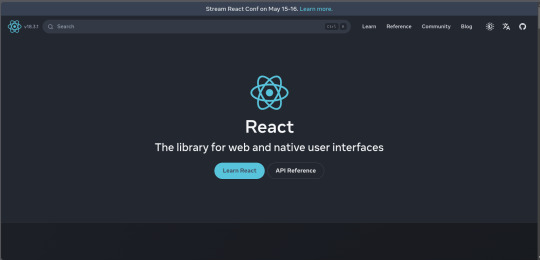
2. Angular
Angular, backed by Google, is a powerful framework for building dynamic single-page applications (SPAs).
Why Choose Angular?
Two-Way Data Binding: Synchronizes data between the model and the view.
Dependency Injection: Improves code maintainability and testability.
Comprehensive Documentation: Extensive resources for learning and troubleshooting.
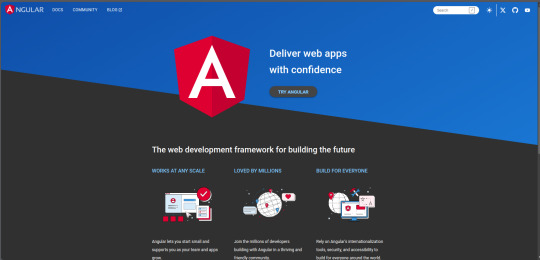
3. Vue.js
Vue.js has gained popularity due to its gentle learning curve and versatility.
Advantages of Vue.js
Reactive Data Binding: Simplifies state management.
Single-File Components: Encapsulate HTML, CSS, and JavaScript in one file.
Flexibility: Can be used for both large-scale and small-scale applications.
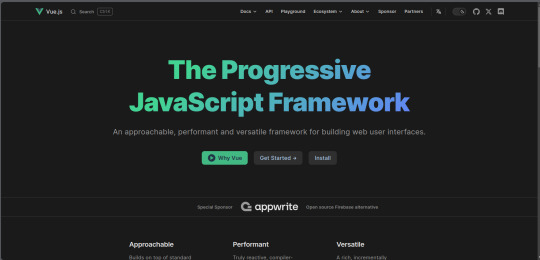
4. Svelte
Svelte is a relatively new player that compiles components into highly efficient vanilla JavaScript at build time.
Svelte’s Standout Features
No Virtual DOM: Directly manipulates the DOM for better performance.
Less Boilerplate: Cleaner code with minimal overhead.
Ease of Use: Intuitive and straightforward syntax.
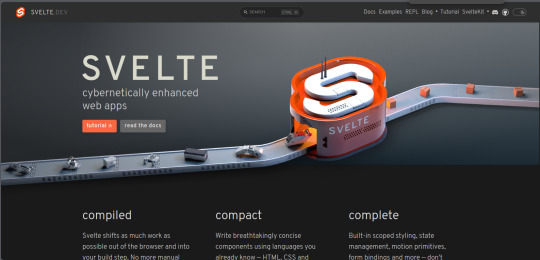
5. Bootstrap
Bootstrap is a front-end framework that provides pre-designed components and a responsive grid system.
Benefits of Using Bootstrap
Responsive Design: Ensures your site looks great on all devices.
Pre-Styled Components: Saves time with ready-to-use UI elements.
Customizable: Easily customize with Sass variables and Bootstrap’s extensive options.
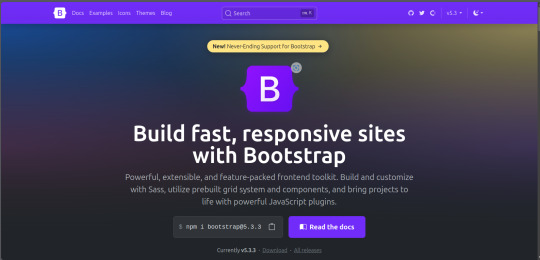
6. Tailwind CSS
Tailwind CSS is a utility-first CSS framework that allows for rapid UI development.
Tailwind CSS Features
Utility-First Approach: Use utility classes directly in your HTML.
Customizable: Extensive configuration options to suit your project’s needs.
Consistency: Enforces a consistent design language across your project.
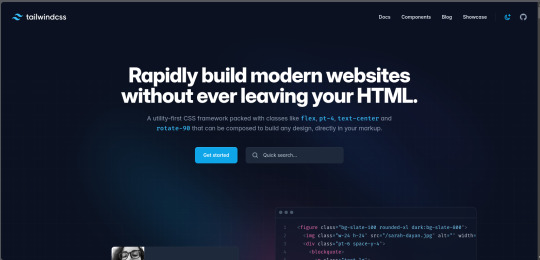
7. Ember.js
Ember.js is a robust framework for building ambitious web applications.
Why Ember.js Stands Out
Convention over Configuration: Reduces the amount of decision-making and boilerplate code.
Strong Routing: Powerful routing capabilities for managing application state.
Productivity: Focuses on developer productivity with built-in best practices.
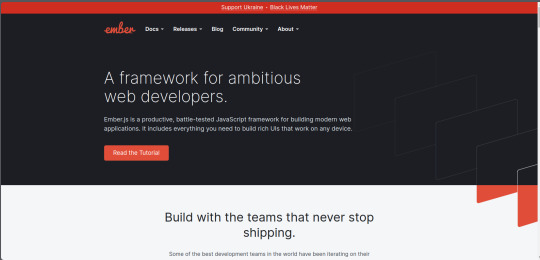
8. Alpine.js
Alpine.js offers a minimal and lightweight way to add interactivity to your websites.
Key Features of Alpine.js
Lightweight: Small footprint with only a few kilobytes.
Declarative Syntax: Similar to Vue.js, making it easy to understand and implement.
Ease of Integration: Can be easily integrated into existing projects.
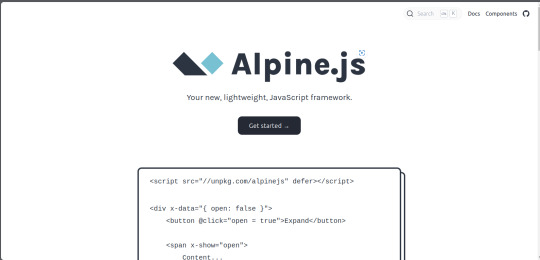
9. Next.js
Next.js is a popular React framework that enables server-side rendering and static site generation.
Benefits of Using Next.js
Server-Side Rendering (SSR): Improves performance and SEO by rendering pages on the server.
Static Site Generation (SSG): Pre-renders pages at build time for fast load times.
API Routes: Allows you to create API endpoints within your application.
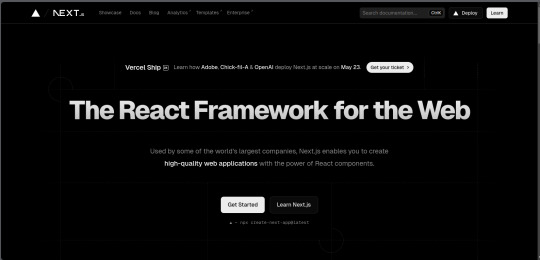
10. Lit
Lit is a simple library for building fast, lightweight web components.
Advantages of Lit
Web Components: Embraces the web components standard for reusable, encapsulated HTML elements.
Performance: Lightweight and highly performant.
Simple API: Easy to learn and use with a minimal API surface.
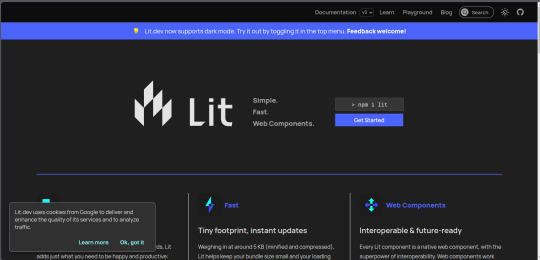
Conclusion
Choosing the right front-end framework or library can significantly impact your workflow and the quality of your projects. Whether you prefer the flexibility of React, the structure of Angular, or the simplicity of Svelte, there's a tool out there to suit your needs.
Final Tips for Selecting a Framework or Library
Project Requirements: Consider the specific needs of your project.
Community and Support: Look for frameworks with strong community support and documentation.
Learning Curve: Choose a tool that matches your current skill level and the time you have available to learn.
By staying informed about the latest tools and trends, you can ensure that your skills remain relevant and that you can deliver the best possible results in your projects. Happy coding!
Remember, the best tool is the one that helps you get the job done efficiently and effectively. So, dive into these frameworks and libraries, and take your front-end development skills to the next level!
Share Your Thoughts
I'm curious to know your thoughts on these front-end frameworks and libraries. Have you used any of them in your projects? Which one is your favorite, and why? Share your experiences and insights in the comments below.👇
2 notes
·
View notes
Text
Exploring the Powerhouse: 30 Must-Know JavaScript Libraries and Frameworks for Web Development
React.js: A declarative, efficient, and flexible JavaScript library for building user interfaces.
Angular.js (Angular): A web application framework maintained by Google, used for building dynamic, single-page web applications.
Vue.js: A progressive JavaScript framework for building user interfaces. It is incrementally adaptable and can be integrated into other projects.
Node.js: A JavaScript runtime built on Chrome's V8 JavaScript engine that enables server-side JavaScript development.
Express.js: A web application framework for Node.js that simplifies the process of building web applications.
jQuery: A fast, small, and feature-rich JavaScript library that simplifies HTML document traversal and manipulation, event handling, and animation.
D3.js: A powerful library for creating data visualizations using HTML, SVG, and CSS.
Three.js: A cross-browser JavaScript library and application programming interface (API) used to create and display animated 3D computer graphics in a web browser.
Redux: A predictable state container for JavaScript apps, often used with React for managing the state of the application.
Next.js: A React framework for building server-side rendered and statically generated web applications.
Svelte: A radical new approach to building user interfaces. It shifts the work from the browser to the build step, resulting in smaller, faster applications.
Electron: A framework for building cross-platform desktop applications using web technologies such as HTML, CSS, and JavaScript.
RxJS: A library for reactive programming using Observables, making it easier to compose asynchronous or callback-based code.
Webpack: A module bundler for JavaScript applications. It takes modules with dependencies and generates static assets representing those modules.
Babel: A JavaScript compiler that allows developers to use the latest ECMAScript features by transforming them into browser-compatible JavaScript.
Jest: A JavaScript testing framework designed to ensure the correctness of your code.
Mocha: A feature-rich JavaScript test framework running on Node.js and in the browser.
Chai: A BDD/TDD assertion library for Node.js and the browser that can be paired with any testing framework.
Lodash: A modern JavaScript utility library delivering modularity, performance, and extras.
Socket.io: A library that enables real-time, bidirectional, and event-based communication between web clients and servers.
GraphQL: A query language for APIs and a runtime for executing those queries with your existing data.
Axios: A promise-based HTTP client for the browser and Node.js, making it easy to send asynchronous HTTP requests.
Jasmine: A behavior-driven development framework for testing JavaScript code.
Meteor.js: A full-stack JavaScript platform for developing modern web and mobile applications.
Gatsby.js: A modern website framework that builds performance into every website by leveraging the latest web technologies.
Chart.js: A simple yet flexible JavaScript charting library for designers and developers.
Ember.js: A JavaScript framework for building web applications, with a focus on productivity and convention over configuration.
Nuxt.js: A framework for creating Vue.js applications with server-side rendering and routing.
Grunt: A JavaScript task runner that automates common tasks in the development process.
Sass (Syntactically Awesome Stylesheets): A CSS preprocessor that helps you write maintainable, scalable, and modular styles.
Remember to check each library or framework's documentation and community support for the latest information and updates.
4 notes
·
View notes
Text
Top JavaScript Frameworks in 2025

In 2025, the JavaScript ecosystem continues to evolve, with several frameworks standing out for their powerful features and robust community support.
React- React remains one of the most popular JavaScript frameworks, known for its efficiency, component-based architecture, and vast ecosystem. Its flexibility and strong community support make it ideal for building dynamic, large-scale applications.
Angular- Angular is a full-fledged framework maintained by Google, offering a complete solution for building scalable web applications. With features like two-way data binding, dependency injection, and robust tooling, Angular is ideal for enterprise-level applications.
Vue.js- Vue.js is gaining traction due to its simplicity, flexibility, and gentle learning curve. It allows developers to integrate with existing projects easily while offering powerful features like reactive data binding and a virtual DOM for high performance.
Ember.js- Ember.js is known for its convention-over-configuration approach, making it highly productive. It provides a strong set of tools, including a built-in router and state management, making it a strong choice for ambitious web applications.
Preact- Preact is a lightweight alternative to React, offering similar functionality but with a smaller footprint. It’s particularly useful for performance-sensitive applications and projects where size is a priority.
For More Follow This Blog: JavaScript Frameworks
0 notes
Text
Dynamics Senior Operations Lead/Analyst
, Java, Python, PHP. Expert knowledge of JavaScript frameworks such as jQuery, React, Angular, Node.js, and Ember.js… Apply Now
0 notes
Text
Dynamics Senior Operations Lead/Analyst
, Java, Python, PHP. Expert knowledge of JavaScript frameworks such as jQuery, React, Angular, Node.js, and Ember.js… Apply Now
0 notes
Text
Top 40 JavaScript Libraries and Frameworks
JavaScript is a versatile language used to create dynamic and interactive web applications. Here are 40 of the most popular and useful JavaScript libraries and frameworks: Popular Frameworks React: A component-based library for building user interfaces. Vue.js: A progressive framework for building user interfaces. Angular: A comprehensive framework for building web applications. Ember.js: A…
0 notes
Text
What Is JavaScript Used For?
Numerous customers contact us because they require JavaScript developers. Occasionally, we are asked to provide them with senior, experienced developers for only 6 to 12 months. Typically, however, we must first assess the project tasks and determine whether a frontend, backend or mobile developer is required.
In this brief article, we will explore the tasks that require JavaScript. Let’s start!
The most popular frontend programming language in the world is now JavaScript. Moreover, contrary to what the majority of non-IT professionals believe, JavaScipt is not only for the frontend.
1. Mobile App Development
React Native has become a popular language for mobile development, but you can also use Ionic, NativeScript, AngularJS, or JQuery Mobile.
2. Frontend Development
Frontend development is the typical form of usage of JavaScript. Today’s most popular programming languages are Angular, React, and Vue.JS, but jQuery and Ember.JS are likely to be encountered in legacy projects.
3. Backend Development
The most popular backend JS framework is Node.JS, which is not only a backend framework but is also utilized by the majority of software developers.
4. Game Development
You might encounter Pixi.JS or Phaser in this microcosm, but Babylon.JS, melon.JS, and Impact.JS are also popular.

As stated previously, Javascript may be utilized for various purposes. Please inform us of your requirements, and Bluebird will provide you with the most qualified senior JavaScript developer available.
For Javascript developers, please visit this page!
1 note
·
View note
Text
Top 5 AngularJS Alternatives for Modern Web Development
Discover the top 5 AngularJS alternatives for modern web development. Explore powerful frameworks and libraries like React, Vue.js, Svelte, Ember.js, and Backbone.js to build scalable, efficient web applications.
1 note
·
View note
Text

Hire Ember.js Developers
Hire experienced Ember.js developers for your web and app development needs. Get high-quality, scalable solutions with expert knowledge in Ember.js. Collaborate with our skilled Ember JS developers to create user-friendly, scalable, and high-performance web applications customized to your business needs.
1 note
·
View note
Text
Empowering Enterprise Applications with Ember.js Development Services
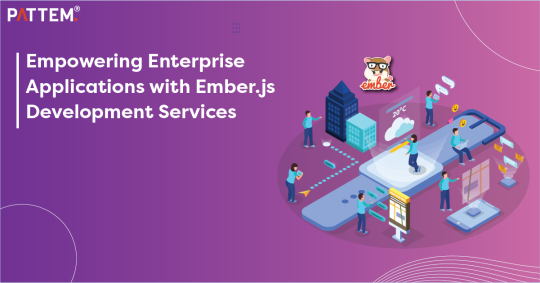
Introduction of Leveraging Ember JS in Enterprise Applications
Ember.js, a modern JavaScript framework, plays a significant role in enterprise applications by providing structured and scalable solutions. It is tailored for building large-scale web applications, offering strong conventions and best practices that simplify collaboration and ensure consistency across projects. This structured approach reduces complexity, making code more predictable and easier to maintain. One of Ember JS' standout features is its scalability, crucial for handling large datasets and complex user interactions typical in enterprise environments. Tools like Ember Data efficiently manage data models and relationships, enabling applications to scale effectively as business requirements evolve.
In this blog, we delve into Ember JS' benefits and its ecosystem in enterprise application development. We explore how Ember.js enhances robust solutions and highlights best practices to maximize its effectiveness. Join us on this journey to discover more about leveraging Ember.js for enterprise-grade applications.
Overview of Ember.js in Enterprise Application
Ember.js has established itself as the leading choice among developers for creating scalable web applications, particularly in enterprise development. Its productivity-enhancing features include Ember CLI, which automates tasks like project setup, testing, and deployment, streamlining development and allowing more focus on business logic implementation and feature delivery.
The Ember.js community plays a pivotal role, offering robust support through forums, meetups, and active contributions from developers and contributors. This community engagement facilitates knowledge sharing, issue resolution, and staying updated with evolving practices in Ember.js development. Moreover, Ember.js employs a component-based architecture that enhances code reusability and modularity in enterprise applications. This approach encapsulates UI elements into reusable components, simplifying maintenance and promoting efficient application development practices.
Key Benefits of Ember.js for Enterprise Applications
Ember.js offers numerous benefits for enterprise applications. It provides a structured approach to development with Ember CLI, streamlining tasks like setup, testing, and deployment to enhance productivity. The framework's scalability is crucial for managing large datasets and complex user interactions effectively. Ember Data simplifies data management, ensuring applications perform well as they scale. The vibrant Ember.js community provides robust support and resources, facilitating continuous learning and problem-solving.
Its component-based architecture promotes code reusability and maintainability, accelerating development cycles and fostering a modular approach to building enterprise-grade solutions. Overall, Ember.js is well-suited for enterprises seeking efficient, scalable, and maintainable web applications.
Conclusion
In conclusion, Ember.js stands out as a powerful framework for enterprise application development, offering structured solutions that enhance productivity and scalability. Its robust conventions and tools like Ember CLI streamline development processes, allowing teams to focus more on business logic and feature delivery. With Ember Data managing data complexities effectively, applications can scale seamlessly as business needs evolve. The active Ember.js community further enriches the development experience through knowledge sharing and ongoing support, ensuring developers stay ahead with the latest advancements and best practices.
Let’s now talk about the leading industry ember js development service, Pattem Digital that specializes in leveraging technologies like Ember.js to build sophisticated enterprise solutions. With a focus on innovation and efficiency, Pattem Digital collaborates closely with clients to deliver tailored applications that meet diverse business needs.
1 note
·
View note
Text
LDS Engineers is a leading Ember.js development company in Australia, offering offshore services to clients worldwide. Our expert team of IT professionals is dedicated to helping clients meet their business goals through efficient and reliable Ember.js development solutions. We focus on building trust with our clients by maintaining transparency and delivering projects on time, ensuring that every solution is both cost-effective and of the highest quality.

At LDS Engineers, we prioritize security at every level. We take extra precautions to protect our clients' data and confidential information, giving them peace of mind throughout the development process. Our team follows strict security protocols to ensure that all sensitive data remains safe and secure.
#ember.js application development#ember.js development#ember.js development services#ember.js development company#ember.js development in australia#ember.js web development#ember.js software development#ember.js framework development#ember.js programming services#ember.js solutions provider
0 notes
Text
Top 5 Front-End Frameworks for Building Modern Web Applications
In today's fast-paced digital world, building modern web applications requires efficient, robust, and user-friendly front-end frameworks. These frameworks simplify the development process, enhance performance, and ensure a seamless user experience. Here, we explore the top 5 front-end frameworks that are most searched by developers and tech enthusiasts.

1. React: The King of Modern Web Development
React is a widely popular JavaScript library developed by Facebook. Known for its component-based architecture, React allows developers to build reusable UI components, making code maintenance and scalability easier. With React's virtual DOM, updates are fast and efficient, ensuring a smooth user experience. Key features include JSX syntax, state management with hooks, and integration with various tools and libraries.
2. Angular: A Comprehensive Framework by Google
Angular is a powerful, full-featured framework maintained by Google. It uses TypeScript, a superset of JavaScript, providing strong typing and improved tooling. Angular's two-way data binding and dependency injection simplify development and testing. Its extensive documentation and robust ecosystem make it a go-to choice for building large-scale enterprise applications.
3. Vue.js: The Progressive JavaScript Framework
Vue.js has gained immense popularity due to its simplicity and flexibility. It is designed to be incrementally adoptable, meaning you can use as much or as little of the framework as needed. Vue.js features a reactive data binding system and a component-based architecture similar to React. Its ease of integration with existing projects and a gentle learning curve make it an excellent choice for both beginners and experienced developers.
4. Svelte: The Radical New Approach
Svelte is a relatively new front-end framework that takes a radical approach by shifting much of the work to compile time. Unlike traditional frameworks that do most of their work in the browser, Svelte compiles your code to efficient, imperative JavaScript that updates the DOM surgically. This results in faster performance and smaller bundle sizes. Svelte's simplicity and lack of boilerplate code make it an attractive option for developers seeking a streamlined development process.
5. Ember.js: The Framework for Ambitious Web Applications
Ember.js is a robust, opinionated framework designed for building ambitious web applications. It offers a convention-over-configuration philosophy, which means it has a lot of built-in functionality that allows developers to follow best practices without much configuration. Ember.js includes a powerful CLI, a templating engine called Handlebars, and a comprehensive data layer with Ember Data. Its strong community and adherence to stability make it a reliable choice for large projects.
Conclusion
Choosing the right front-end framework for your web application can significantly impact your development process and the end-user experience. React, Angular, Vue.js, Svelte, and Ember.js each offer unique features and advantages tailored to different project needs and developer preferences. By leveraging these modern frameworks, you can build efficient, scalable, and user-friendly web applications that stand out in today's competitive digital landscape.
#wishlan#it company#startup#it services#web design agency#digital marketing#it solutions#web development
0 notes